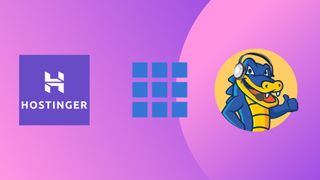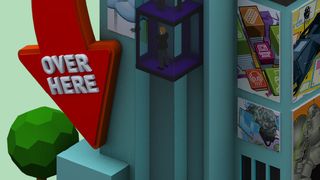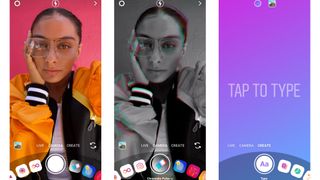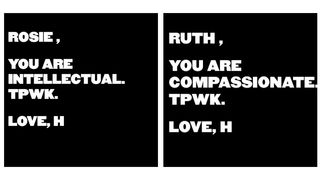6 ways to use Twitter to your advantage
Twitter is broken, not dead! Here are six simple things you can do to fix it.
There's a lot of talk going around these days about the death of Twitter, but I think the stories of its demise are greatly exaggerated. I've been a Twitter user since 2007, and my use ebbs and flows. Like many, I have noticed some alarming trends in the tones of tweets that have come across my feed over the last few years.
To some, the matter is cut and dried: abuse. Not people abusing Twitter, but abusing each other on Twitter. To be sure, this is a huge problem, but I don't think it's why people have stopped using Twitter.
From my observation, it comes down what is actually a much larger problem on the web, one that allows the abuse to happen in the first place: trust. We find it increasingly difficult to trust each other online.
In order to trust each other, though, we have to take responsibility for our own use of the internet: in this case Twitter. To help, here are six simple rules I follow to help make Twitter a nicer place to visit.
01. Don't use autobots
Twitter increasingly seems to be made up of autobots talking to autobots. People set up systems to automatically tweet and re-tweet and re-re-tweet but no actual human is there to see them. It reminds me of the scene in True Genius where students increasingly leave tape recorders to record the class lecture, to the point where the professor simply starts playing a tape rather then delivering the lecture in person.
If you haven't read it, seen it, or heard it, don't post it. Autobots can seem like a good idea for repetitive tasks – like saying, "Thanks of following me" or posting the astronomy picture of the day – but are really a disservice since these posts become nothing more than noise. Whenever you post, always add value, either by giving your opinion or just a few words on why you think what you are posting is important.
02. Make your avatar you

Not only does it help people to know what you actually look like to help them trust you, remember that your Twitter avatar gets around. If you ever use Twitter to sign on to other services, they generally default to your Twitter photo.
Get the Creative Bloq Newsletter
Daily design news, reviews, how-tos and more, as picked by the editors.
If you are anonymous in the real world, you have to wear a mask or stand in the shadows. Everyone knows that you are protecting your actual identity. Online, however, you can appear to a known entity, but actually be hiding your true identity.
Don't get me wrong, I believe in the right to be anonymous. It's important to be able to say certain things without worrying about reprisals. But if you want to be anonymous be anonymous! Don't pretend to be something or someone you are not.
03. Don't RT… QT

If I wanted to see tweets from the person you are retweeting, I would probably follow them. I want to read what you have to say: your take on what the person tweeted.
The 'quote tweet' allows you to not only post the original tweet, but add your commentary to it, making the information even that much richer.
04. Use lists
One problem that contributes the signal to noise issue on Twitter is following too many people. I try to keep the number of people I follow down to around 500-600. Lists allow you to create personalised sub-sets of your main Twitter feed, meaning that you better better filter who you see in a particular feed on a particular topic.
I've created lists for my friends, scientific sources, news sources, design sources, political sources, and a few others. Some of these I look at constantly (friends), others only occasionally, but it drastically cuts down the signal to noise ratio for me. Of all the things I'm proposing here that will make Twitter useful to you personally.
05. Don't use the Twitter app

A big part of the problem with Twitter is the Twitter app. Regardless of the device, the Twitter app is nothing but the basic – yet incomplete – functionality of the website. It's just not very good, and seems mostly designed to get you to look at Twitter ads and follow more people. Over the years, Twitter has done a 'good' job of killing any unofficial Twitter apps, but there are still a few official and unofficial apps that do a damn site better job.
For my computer, I keep Tweetdeck running most of the time. Tweetdeck allows me to monitor my whole feed, individual lists, searches, messages, and mentions in an easy to navigate interface. With my mobile and tablet devices, there is no Tweetdeck, but there is a close competitor: Hootsuite. While not quite as refined as Tweetdeck, it still fulfills most of the key features, such as allowing me view individual Twitter lists.
06. If you can't tweet anything nice (or at least constructive), don't tweet anything at all

This gets into the abuse thing. Yes, I occasionally make snarky comments, but never with the intent to harm anyone. There's also a difference between abusive language and constructive comments. If I need to explain that difference to you, then I'm afraid it maybe too late… but maybe not.
When I was young, we had a word called 'tact', which does not seem to be in common usage anymore. Apparently in the 21st century someone who is tactful and expects others to be tactful is referred to as 'politically correct'. But tact is something Twitter desperately needs more of.
Before you post any tweet, just ask yourself one simple questions: What do I want the person's response to be when reading my comment? If you are simply trying to upset them, scare them, antagonize them or are in any other way being tactless, then you are being abusive. If you want to be abusive, then that's your own look-out, but don't expect others to treat you with tact if you are not willing to do the same.
Words: Jason Cranford Teague
Jason Cranford Teague is a Senior Creative Director at Capital One and teaches workshops on experience design for developers, development for designs, and temporal design thinking.
Like this? Read these...
- 5 things your portfolio must have
- How to start a blog
- Download the best free fonts

Thank you for reading 5 articles this month* Join now for unlimited access
Enjoy your first month for just £1 / $1 / €1
*Read 5 free articles per month without a subscription

Join now for unlimited access
Try first month for just £1 / $1 / €1
The Creative Bloq team is made up of a group of design fans, and has changed and evolved since Creative Bloq began back in 2012. The current website team consists of eight full-time members of staff: Editor Georgia Coggan, Deputy Editor Rosie Hilder, Ecommerce Editor Beren Neale, Senior News Editor Daniel Piper, Editor, Digital Art and 3D Ian Dean, Tech Reviews Editor Erlingur Einarsson and Ecommerce Writer Beth Nicholls and Staff Writer Natalie Fear, as well as a roster of freelancers from around the world. The 3D World and ImagineFX magazine teams also pitch in, ensuring that content from 3D World and ImagineFX is represented on Creative Bloq.




